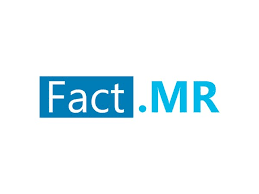In a world where data breaches, phishing, and regulatory oversight have become common headlines, email encryption software has moved from niche security tool to essential enterprise infrastructure. As businesses, governments, and institutions increasingly demand strong privacy, compliance, and secure communication, the Email Encryption Software Market is poised for substantial growth. Projections show that global market value will rise from USD 8.5 billion in 2025 to approximately USD 28.4 billion by 2035, achieving a compound annual growth rate (CAGR) of about 12.8%.
What’s Driving Growth
A convergence of pressures is pushing this market forward. Foremost among them is regulatory demand: privacy laws and data protection mandates globally are placing heavy responsibility on organizations to safeguard communications. Combined with rising incidents of email-based threats—business email compromise (BEC), phishing, ransomware—the cost of unencrypted or weakly secured emails is more visible than ever. Another accelerant is the shift to hybrid and remote work, which requires encrypted channels over varied networks. Cloud adoption and enterprise digital transformation amplify the need for scalable, flexible encryption solutions. Meanwhile, improvements in encryption algorithms, threat detection, integration with enterprise communication platforms, and usability are helping reduce friction and increase adoption.
Segmentation; Solution vs. Services, Deployment, and End Users
The market divides into solutions (software/platform) and services (implementation, support, managed encryption). The solutions segment commands a large share—about 70% of the market in 2025—because organizations prefer integrated, turnkey encryption platforms rather than piecemeal or ad-hoc tools.
By deployment model, cloud-based encryption is leading, capturing around 60% of market share in 2025. Cloud models offer scalability, rapid deployment, and lower infrastructure cost, which are particularly attractive to enterprise customers and those with distributed workforces. On-premises solutions retain importance in regulated industries and organizations with stringent data sovereignty requirements.
Large enterprises are the largest adopters, representing approximately 60% of usage, due to their larger exposure to regulatory fines and greater risk. Small and medium enterprises (SMEs) are growing faster percentage-wise, though from a smaller base.
U.S. & Europe: Regional Insights
United States
The U.S. leads adoption of email encryption software, driven by robust cybersecurity regulation, privacy frameworks, and high awareness among enterprises and government agencies. In 2024-2025, U.S. demand is driven especially by financial services, healthcare, legal, and government sectors. The U.S. market is expected to grow with a CAGR in the low- to mid-teens over the forecast period, with enterprises gravitating toward full end-to-end encryption, data loss prevention, and integrated threat-detection features.
Europe
Europe is also a major market, influenced strongly by privacy laws like GDPR, national data protection authorities, and cross-border data transfer regulations. Enterprises in Germany, UK, France, and the Nordics show strong movement toward encryption solutions that meet both operational performance and stringent legal compliance. European customers often demand more demonstrable encryption strength, traceability, and integration with on-premises infrastructure or hybrid setups. Pricing, vendor trust, and certifications also carry more weight.
Recent Developments & Innovations
Recent years have seen several important developments in the email encryption space:
- Vendors are embedding AI and machine learning to help with threat detection, anomaly detection, phishing prevention, and automated key management, improving both security and usability.
- There’s increased focus on zero-trust architectures, where even internal email traffic is encrypted, privileged access minimized, and continuous verification enforced.
- Cloud-email platform providers are offering built-in encryption features or better interoperability with third-party encryption tools, reducing friction for enterprises adopting encryption broadly.
- Some solutions now support seamless encryption for mobile devices, hybrid deployments, or cross-platform compatibility, helping organizations with diverse infrastructure portfolios.
- Increased interest in landing encryption solutions that are user-friendly—minimizing prompts, integrating with existing email and productivity suites, and lowering training or adoption burden.
Key Players & Competitive Landscape
The email encryption ecosystem is competitive, with both large enterprise security firms and focused specialists. Major players include Microsoft, Cisco, Symantec (Broadcom), Proofpoint, Mimecast, Zix, Sophos, Trend Micro, Fortinet, among others. These vendors differentiate on encryption strength, usability, integration, pricing, service/support, compliance credentials, and deployment flexibility (cloud, hybrid, on-premises). Specialists often compete in niche areas (e.g. email encryption for regulated verticals, or easy-to-use tools for SMEs) or via partnerships with broader cybersecurity platforms.
Challenges & Strategic Barriers
Growth isn’t without friction. High implementation costs, especially for large organizations or heavily regulated sectors, pose a barrier. Integrating encryption systems with existing legacy email infrastructure can be complex. Usability remains a challenge—if encryption makes workflows cumbersome, users resist or bypass. Smaller organizations may lack budget, technical skill, or awareness to adopt strong encryption. Also, evolving threat vectors and regulatory overhead require constant updates, audits, and trust-building with customers.
Browse Full Report: https://www.factmr.com/report/email-encryption-software-market
Market Outlook & Strategic Takeaways
Over the next decade, the email encryption software market is expected to scale significantly. Some strategic takeaways for vendors, enterprises, and stakeholders:
- Usability + Integration will increasingly decide winners: solutions that encrypt by default, require minimal user training, and integrate smoothly with existing platforms will gain adoption fastest.
- End-to-end and gateway encryption will both remain relevant, but the gap is likely to shift toward end-to-end in sectors (finance, healthcare) that require strong privacy assurances.
- Regulatory alignment and compliance support will be competitive differentiators: certifications, audit support, privacy credentials will matter highly, especially in Europe.
- Cloud-first, hybrid models will dominate new deployments; vendors that optimize for cloud scalability and secure key management will find new opportunities.
- Growing SME adoption will be a key frontier. Vendors who can offer simplified, cost-effective encryption tools tailored for smaller organizations will unlock large volumes.

